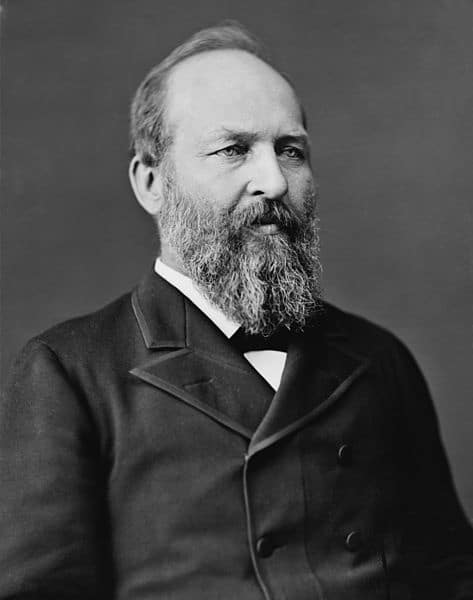President James Garfield won the Election of 1880 and became the 20th President of the United States.

Former president Rutherford B. Hayes had made good on his promise not to run for a 2nd term and was happy that his fellow Ohioans had won the presidency.
Garfield defeated former Civil War General Winfield Scott Hancock and won by a slim margin.
Garfield's Term
March 4, 1881: President James Garfield is sworn in as the 20th President of the United States and delivers his inauguration speech.
March 5, 1881: Garfield, in a controversial decision, selects Blaine as his Secretary of State. This was part of a backroom deal to attain the electoral votes of New York.
March 23, 1881: Garfield fires Stalwart E. A. Meritt. Meritt, in turn, publishes a letter that connects Garfield to the Star Route Frauds.
May 4-5, 1881: Garfield learns of the Congress's plan to delay his nominees. He withdraws all nominations with the exception of Robertson.
May 18, 1881: Robertson is confirmed as the new collector of customs in New York City.
July 2, 1881: James A Garfield is shot in the back by Charles J. Guiteau. The wound does not immediately kill Garfield. Guiteau is blamed for his actions and is later to be found insane.
July 4, 1881: Booker T. Washington opens up what would be eventually called the Tuskegee Institute. This would be the first African-American institution in the United States.
July 19, 1881: Sitting Bull returns to America after Canada denies him and his people a reservation. The return would eventually cost him two years in prison.
July 26, 1881: Alexander Graham Bell tried to find the bullet in the body of President Garfield and failed.
September 19, 1881: President James A. Garfield dies from his bullet wound at the seaside in Elberon, New Jersey, from blood poisoning and poor medical treatment after his doctors failed to find the bullet lodged in his back. Chester A. Arthur was sworn into office as the 21st President of the United States, becoming the third President to take over the office without being elected.
